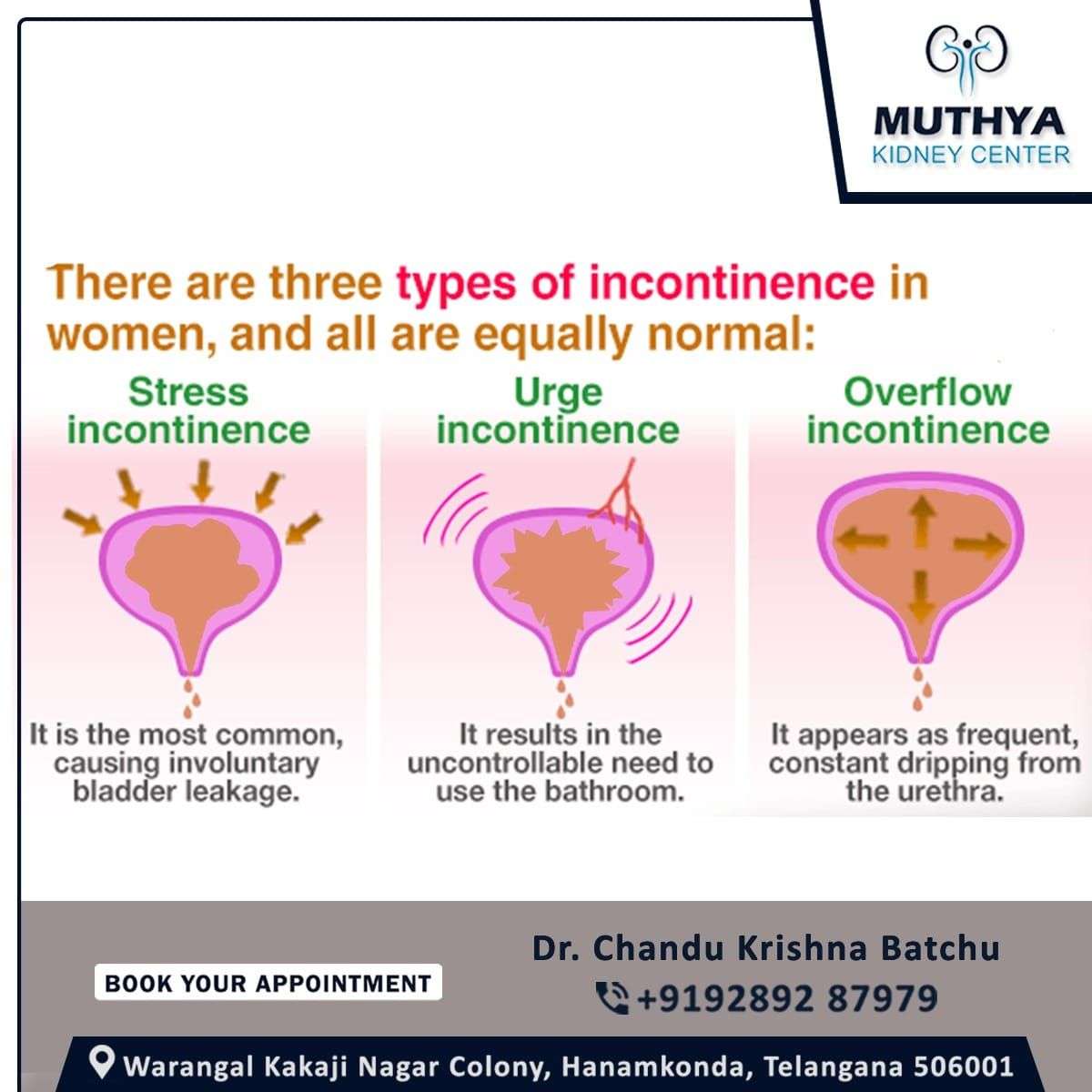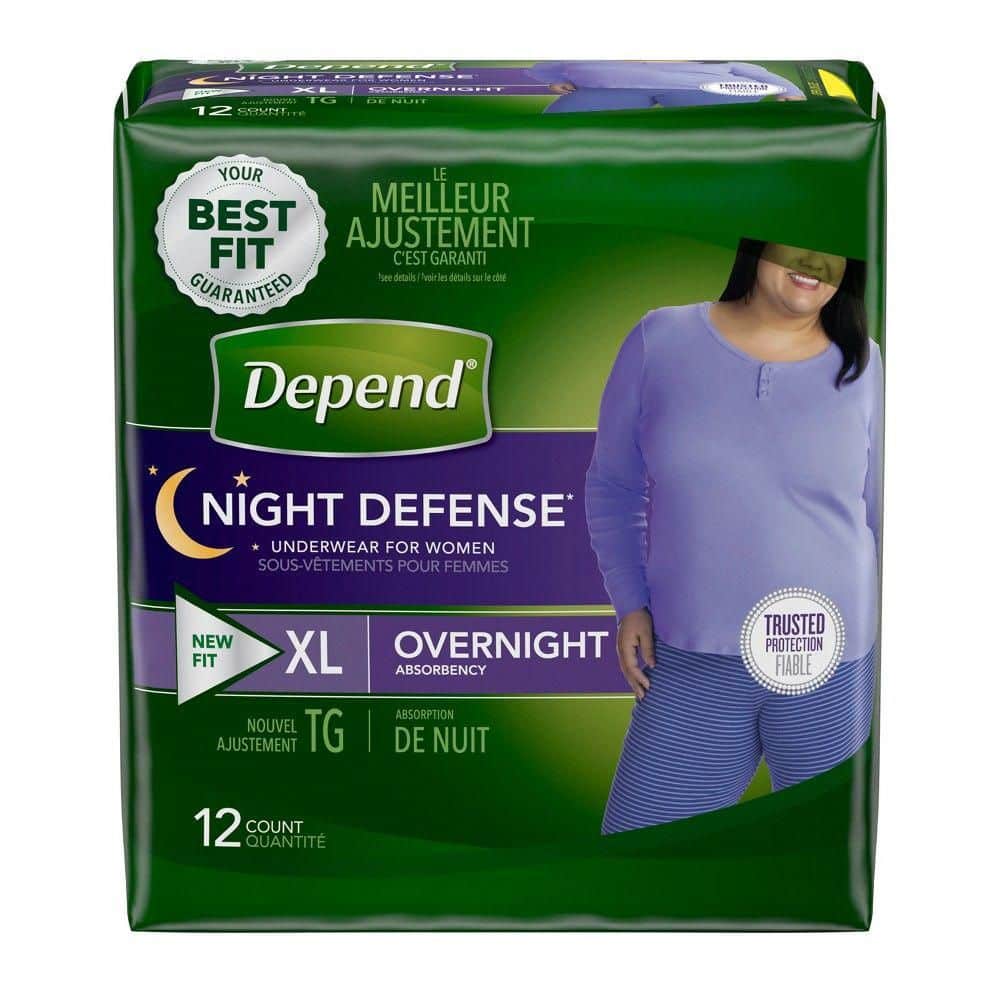How Is Overactive Bladder Diagnosed
A healthcare provider can diagnose overactive bladder by reviewing your symptoms and conducting a physical examination of the organs around your pelvis and rectum. They may ask you questions such as:
- What are your symptoms?
- How long have you had these symptoms?
- Do you have a family history of overactive bladder?
- What over-the-counter and prescription drugs do you take?
- What kinds of fluids do you drink during the day?
- What time of day do you drink certain fluids?
- What do you eat during the day?
They may also refer you to a urologist. A urologist is a doctor who specializes in diseases and conditions that affect your urinary tract and reproductive system.
Bladder Pressure & Urgency Suck
They happen for A LOT of reasons.
The 90,000 foot view is that if the bladder is functioning normally, it will fill gradually, up to about 12-14 ounces. When it is half full it ought to send a small signal, which we ignorethen it keeps filling, until its actually full-ish, at which point it sends us a gradually building signal to pee, which we eventually listen to. We pee, cycle resets, and viola, life is good.
BUT, when the badder becomes in charge rather than the brain, , problems arise. The bladder begins to overexcite and respond HUGELY to the first signal at half-full. That signal is supposed to be small, right? But now its notits big and we have all sorts of bladder pressure and urgency.
First step is to understand Whats Normal for the bladder. Check out this video on my main webpage, for deeper insight into bladder norms. Fill out a bladder diary to track how youre doing. Join my mailing list for free guidance in the bladder diary!
Once we have a better insight, we are better able to cope with the pressure & urgency. Heres 3 tips to manage those symptoms, when they do occur.
Try Pelvic Floor Exercises
When you perform pelvic floor exercises, also called Kegels, you tighten up, or contract, the pelvic floor muscles as if you need to prevent gas from escaping. You should feel the contraction more in the back than in the front.
Kegels can help with both SUI and UUI, but youll time the exercise differently depending on which type you are trying to control.
To prevent UUI: If you feel the urge to void and do not think you will make it to the toilet in time, stop, do a Kegel, wait until you feel the urgency subside, then walk to the toilet under control. The more times you do this, the more your bladder control will improve. It may take three months to see a significant improvement.
To prevent SUI: When you Kegel, the muscles pull up tissue under the urethra and help to keep the urethra closed when pressure hits the bladder. The trick is you need to Kegel before the pressure hits the bladder. This means if you are going to sneeze, you need to tighten at the moment you are inhaling. This takes practice, and it may take two to four months before you see a difference.
It is helpful to do approximately 30 Kegels every day. You can do 10 in a row , three times every day.
If you dont improve on your own, you can ask your PCP or gynecologist to refer you to a pelvic floor physical therapist, or search for one here. If your incontinence still does not improve, see a urogynecologist or a urologist who specializes in female bladder control problems.
About the Author
Recommended Reading: Bladder Infection Keeps Coming Back
Causes Of Urge Incontinence
The urgent and frequent need to pass urine can be caused by a problem with the detrusor muscle in the wall of the bladder. The detrusor muscles relax to allow the bladder to fill with urine, then contract when you go to the toilet to let the urine out.
Sometimes the detrusor muscle contract too often, creating an urgent need to go to the toilet. This is known as having an ‘overactive bladder’. The reason your detrusor muscle contracts too often may not be clear, but possible causes include:
- drinking too much alcohol or caffeine
- poor fluid intake this can cause strong, concentrated urine to collect in your bladder, which can irritate your bladder and cause symptoms of overactivity
Stopping these medications, if advised to do so by a doctor, may help resolve your incontinence.
Do The Right Exercises

High-impact exercise and sit-ups put pressure on your pelvic floor muscles and can increase leaks.
To strengthen your pelvic floor to relieve symptoms, replace high-impact exercise, such as jogging and aerobics, with strengthening exercise, such as pilates.
Pilates strengthens your core muscles, which is beneficial for stress incontinence.
Read Also: What’s Good For Weak Bladder
How Do I Do Kegel Exercises
To do Kegels:
If you are uncomfortable or uncertain about doing Kegel exercises on your own, a doctor or nurse can also teach you how to do Kegels. A pelvic floor physical therapist or other specialist may also be available in your area to help teach you how to strengthen these muscles.
Botulinum Toxin A Injections
Botulinum toxin A can be injected into the sides of your bladder to treat urge incontinence and overactive bladder syndrome .
This medication can sometimes help relieve these problems by relaxing your bladder. This effect can last for several months and the injections can be repeated if they help.
Although the symptoms of incontinence may improve after the injections, you may find it difficult to fully empty your bladder. If this happens, you will need to be taught how to insert a catheter into your urethra to drain the urine from your bladder.
Botulinum toxin A is not currently licensed to treat urge incontinence or OAB, so you should be made aware of any risks before deciding to have the treatment. The long-term effects of this treatment are not yet known.
Recommended Reading: Why Do I Get Bladder Infections So Easily
What Are Kegel Exercises
Kegel exercises, also called Kegels or pelvic floor muscle training, are exercises for your pelvic floor muscles to help prevent or reduce stress urinary incontinence. Your pelvic floor muscles support your uterus, bladder, small intestine, and rectum.
Four in 10 women improved their symptoms after trying Kegels.9 Kegels can be done daily and may be especially helpful during pregnancy. They can help prevent the weakening of pelvic floor muscles, which often happens during pregnancy and childbirth. Your pelvic floor muscles may also weaken with age and less physical activity.
Some women have urinary symptoms because the pelvic floor muscles are always tightened. In this situation, Kegel exercises will not help your urinary symptoms and may cause more problems. Talk to your doctor or nurse about your urinary symptoms before doing Kegel exercises.
The Constant Need To Urinate Is Enough To Disrupt Your Whole Life Find Out What Causes It And How To Stop Frequent Urination And Take Back Your Life
An average person will urinate about 6 to 8 times in a full day.
But if youre urinating enough for it to be annoying, you may start to feel frustrated.
Maybe you cant take that long road trip because you dont want to stop for a restroom every few minutes. Maybe youre getting sick of walking from your desk to the bathroom.
The constant need to urinate is enough to disrupt your whole life. Find out what causes it and how to stop frequent urination and take back your life.
Also Check: What Medications Treat Overactive Bladder
What Is An Overactive Bladder Symptoms To Look For
Overactive bladder is a syndrome, or a set of symptoms, that is believed to be due to sudden contractions of the muscles in the wall of the bladder. When you have overactive bladder syndrome, the muscles controlling bladder function start acting involuntarily. This often leads to urinary incontinence or loss of bladder control. The urine leakage experienced by someone with OAB can be as little as several drops to up to several ounces. Sometimes, incontinence can be a sign of something simple like drinking way too many caffeinated beverages on a daily basis. Other times the underlying cause can be something more serious.
An overactive bladder is said to account for 40 to 70 percent of incontinence. What is incontinence? Incontinence is a lack of voluntary control over urination or defecation. When you have overactive bladder, you can experience urinary incontinence or loss of control over urination.
There are actually two different types of overactive bladder. Dry is when you have a sudden, urgent need to urinate many times during the day. Wet means you have the sudden, urgent need to urinate and you experience bladder leakage, which is also referred to as urge incontinence. Both dry and wet can occur without any underlying health condition. An estimated 60 percent of OAB patients have dry OAB while 40 percent have wet OAB .
OAB symptoms can differ on an individual case basis. Common symptoms of an overactive bladder include:
But Have Some Back Up If The Dam Does Break
If youre worried about being caught out and about, without a bathroom, and unable to suppress the urge to pee, make sure you grab some back up protection. And by that we mean disposable underwear and pads. Lily Bird has you covered with pads and underwear delivered straight to your door so you never run out.
You May Like: How Long Does It Take Azo Bladder Control To Work
Limit Caffeine And Alcohol
Caffeine and alcohol have a diuretic effect on your body. That means they increase the amount of urine you produce. If youre having trouble controlling your bladder, consuming caffeinated beverages may be contributing to the problem.
To help manage your symptoms, consider limiting caffeine and alcohol, or avoiding them altogether. Coffee, tea, soda, chocolate, and certain medications are common sources of caffeine.
Do Regular Kegel Exercises

Once you find your pelvic floor muscles, you can complete regular Kegel exercises to strengthen them. Simply contract your pelvic floor muscles, hold them for five to ten seconds, and relax them. The Urology Care Foundation suggests that you complete at least two sessions of Kegel exercises per day. Up to 30 contractions per session.
Recommended Reading: Sudden Loss Of Bowel And Bladder Control
How Soon After Treatment Will I Feel Better
Pelvic floor exercises and changes to your lifestyle may take six to eight weeks before you start to see results.
Many medications start to relax your bladder muscles after a few hours. But they may take up to a month to work fully.
Botox should start to work after one to two weeks.
Most people start to see improvement after six nerve stimulation treatments. However, it may take up to 12 treatments to see results.
Precautions And Proper Diagnosis
The main symptoms of OAB can also occur in other health conditions like bladder cancer, urinary tract infection and enlarged prostate. Seeing blood in your urine is not a symptom of OAB.
A sudden and frequent need to urinate is common in both OAB and a UTI. How can you tell the difference between these two urinary health issues? Unlike OAB, a UTI also comes with other symptoms such as discomfort while urinating. In addition, OAB symptoms are continuous while UTI symptoms are sudden and may also include a fever.
Overflow incontinence is characterized by the involuntary release of urine from an overfull urinary bladder, often in the absence of any urge to urinate. This condition is not associated with OAB. It typically occurs in people who have a blockage of the bladder outlet, which can occur with benign prostatic hyperplasia, prostate cancer or a narrowing of the urethra. Overflow incontinence can also occur when the muscle responsible for removing urine from the bladder is too weak to empty the bladder in a normal way.
It is very important to see a doctor to ensure a proper diagnosis if you experience any changes in your urine and/or urination habits.
Read Also: How Long Should A Bladder Infection Last
There Are Two Primary Categories Of Medications Used To Treat Urge Incontinence Including:
- Anticholinergics These medications help relax your bladder, and can be helpful for urge incontinence and overactive bladder. There are a few side effects to be aware of, including dry mouth and eyes, constipation and difficulty completely emptying your bladder.
- Beta 3 agonist This category of medications relaxes the bladder muscle and can increase the amount of urine your bladder can hold. It also may increase the amount you are able to urinate at one time instead of small amounts more frequently. This is a newer category of medications, and your insurance provider may require that you try other conservative or medication options first.
Your health care provider will help you determine which is right for you and your condition.
From Leaking Urine To Sudden Urges To Go: An Ob
You dont have to suffer in silence there are many treatment options available.
Whether its a few drops of leaking urine or a complete emptying of the bladder, incontinence is a bladder control issue that women are twice as likely to have as men. And by the time a womanhas made an appointment to talk about what shes dealing with, she has had enough.
Incontinence can be embarrassing, super annoying, and costly. But you dont have to suffer in silence there are many treatment options available.
Read Also: What Is The Treatment For Bladder Cancer Stage 1
Eating To Reduce Constipation
Sometimes constipation can place extra pressure on your bladder. You can prevent constipation by exercising regularly and including more fiber in your diet. Foods high in fiber include beans, whole-wheat breads, fruits, and vegetables.
The Cleveland Clinic recommends eating 2 tablespoons of a mixture of 1 cup of applesauce, 1 cup unprocessed wheat bran, and 3/4 cup of prune juice every morning to promote bowel regularity.
Conservative Ways To Treat Urinary Incontinence Include:
- Dietary changes Try to eliminate or cut back on how much caffeine you consume, such as in coffee and tea. In addition, limit the amount of carbonated drinks and acidic foods, such as oranges and pineapples, in your diet. Caffeine prompts your body to get rid of fluids, which causes you to need to urinate. Also, the acids in carbonated drinks and some foods can irritate your bladder and cause you to go more often.
- Manage constipation For some people, urinary incontinence is a symptom of constipation. Your rectum is located near your bladder and shares many of the same nerves. Hard, compacted stool in your rectum can cause these nerves to be overactive and increase urinary frequency.
- Physical therapy A therapist can explain different exercises to do to strengthen the muscles that help control urination. Also known as Kegels, these exercises are especially effective for stress incontinence but also may help urge incontinence.
Recommended Reading: Feeling Of Not Emptying Bladder
What Are Normal Bladder Habits
A healthy bladder can hold one and a half to two cups of urine during the day and about four cups at night. It is normal to pass urine five or six times a day if you drink between 6-8 glasses of fluid. It is usual to empty your bladder when you get out of bed in the morning, three times during the day, and before you go to bed at night. As we age this pattern may change, as older people tend to make more urine at night.
Kegels For Stress Incontinence

Many women experience bladder leakage with coughing and sneezing with stress urinary incontinence.
The key functional training technique to practice is called The Knack. This pelvic floor exercise technique involves contracting your pelvic floor muscles immediately before and during the activities that cause your stress incontinence for example coughing, sneezing or laughing.
Also Check: What To Take When You Have A Bladder Infection
You May Like: How To Improve Bladder Health
When You Should See A Health Care Professional
You shouldnt have to wear a pad to soak up urine every day. Also ask yourself these questions:
-
Is the urge to urinate interfering with your work because of leaking or frequent bathroom breaks?
-
Do you map out where bathrooms are when you run errands?
-
Is incontinence interfering with your sex life or intimacy with your partner?
These are all signs of a problem, and that it may be time for you to talk with a gynecologist.
What Is The Main Cause Of Overactive Bladder
Conditions or injuries that affect your detrusor muscle cause overactive bladder. Your detrusor muscle is a collection of smooth muscle fibers in the wall of your bladder. These conditions may include:
- Abdominal trauma. Pregnancy and childbirth can stretch and weaken your pelvic muscles. Your pelvic muscles are the muscles and tissues that support the organs in your lower abdomen. Your bladder may sag out of its normal position if your pelvic muscles weaken.
- Nerve damage. Sometimes your body sends signals to your brain and bladder to pee at the wrong time. Certain diseases and trauma can cause nerve damage, including pelvic or back surgery, herniated discs, radiation therapy, Parkinsons disease, multiple sclerosis or a stroke.
- Medications, alcohol and caffeine. All of these can dull your nerves, which affect signals to your brain and cause your bladder to overflow. Diuretics and caffeine may cause your bladder to fill rapidly and potentially leak.
- Infection. An infection, such as a urinary tract infection , can irritate your bladder nerves and cause your bladder to squeeze without warning.
- Extra weight. Having overweight can put extra pressure on your bladder, which can cause urge incontinence.
- Estrogen deficiency after menopause. Hormonal changes may cause urge incontinence. Vaginal-only estrogen therapy can help.
You May Like: Hot Tub Cover Air Bladder